A Living Language – The Infinite Stories of Ballet by Anagha Madhan
Imagine stepping into a theatre, the lights dimming as the orchestra begins to play and the curtains rise. What do you expect out of a ballet? Do you expect the same predictable movements, the same overdone classical music, and the same age-old stories that seem to blend into one big predictable blob? What if I told you that’s not what ballet truly is?
Often unfairly labeled as monotonous, with a leading misconception that all performances look the same, ballet has often been boiled down to just being graceful dancers twirling to classical music, telling stories that feel centuries removed from day to day life today. To many people, it seems like a very repetitive art form; an artform exclusive to those with a deep, extremely niche appreciation of art. Without seeing the range of what ballet offers – innovative storytelling, a fusion with other art forms, and the dynamic retelling of evergreen classics – it is easy to misunderstand this timeless and ever-adapting art form. We’re here to put all those misconceptions to rest. If you’ve ever dismissed ballet as repetitive, ‘it all looks the same’, or old fashioned, prepare to see why this is in reality – an extremely powerful blend of athleticism, story-telling and innovation that has evolved far beyond its classical roots!
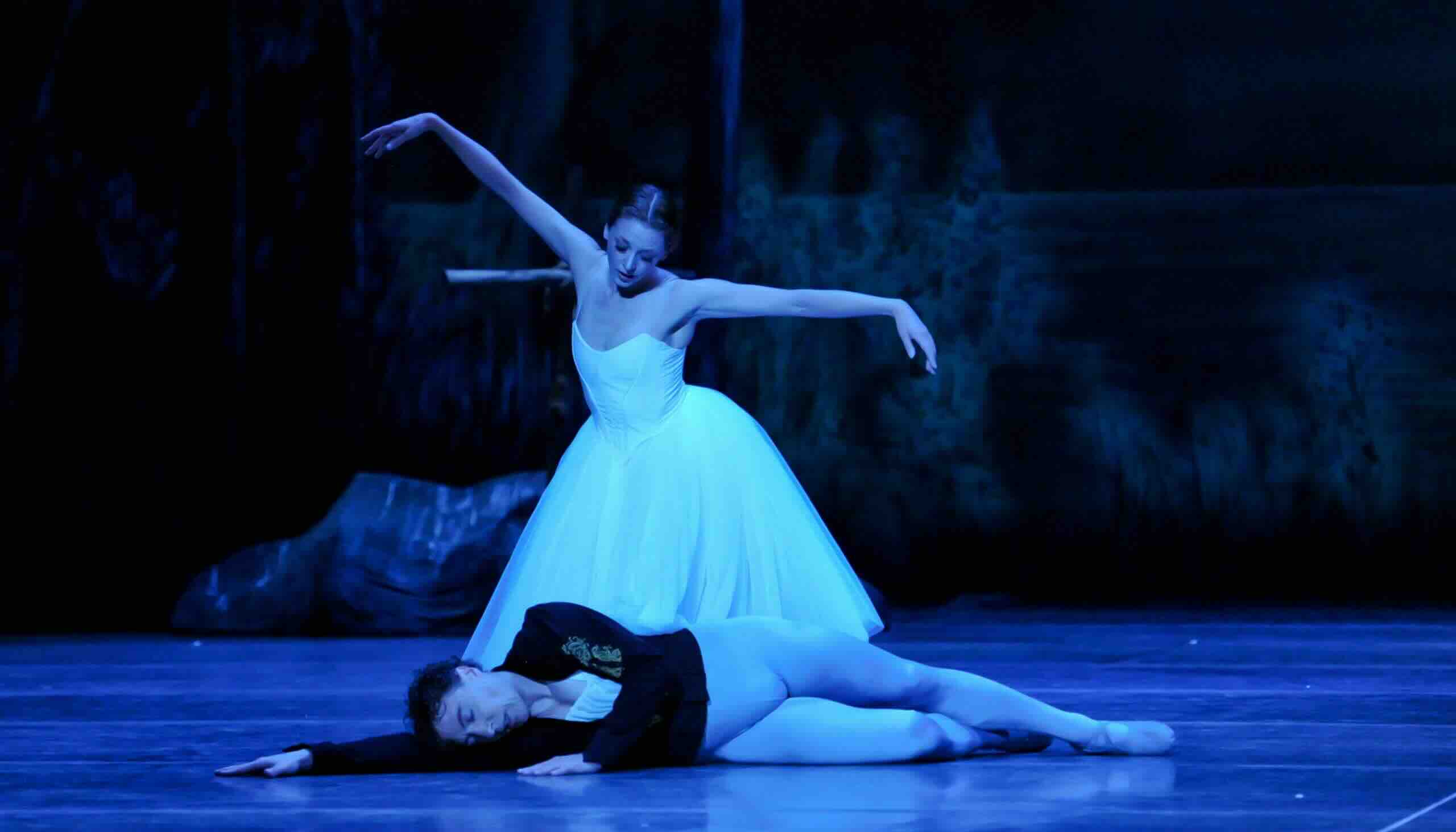
Giselle
Why Ballet Has Infinite Stories
An idea to consider at this point is to view ballet as a language – one that transcends words to tell stories and share ideas through the human body, expressions, emotions and movement. Historically speaking, when one looks at ballet, we see humanity’s enduring desire to communicate in a dynamic and universal way, with just movement and raw emotion. What is more relatable than witnessing humanity’s struggles and triumphs, expressed physically, stripped of dialogue, and conveyed purely to our common denominator – the body.
To say all ballet is the same is like saying all stories are the same, and actively ignoring the rich variety of tales and emotions that ballet brings to life.

Swan Lake
Classical Ballet: The Enduring Themes of Love and Betrayal
Classical ballet draws on timeless themes – love, betrayal, and redemption. Pieces like Swan Lake and Giselle portray universal struggles through movements and music, delving into struggles that are deeply human, relevant across generations. Let’s consider these two as examples to show that despite both being classics and under the same umbrella of classical ballet, they display different ideas and emotions, and explore different ideas. Swan Lake revolves around the themes of love and betrayal, and the conflict between what is reality and what is illusion. We follow Odette, a princess turned into a swan by an evil sorcerer, and Prince Siegfried, who falls in love with her. Their love is tested by deception, as Odile (the sorcerer’s daughter) impersonates Odette, leading to heartbreak and tragedy. At its core, Swan Lake explores the universal yearning for freedom, of feeling caught in a situation out of our own control, the pain of unfulfilled love, and the consequences of misplacing our trust.
On the other hand, Giselle tells us the tale of a young peasant girl who falls in love with Albrecht, a nobleman in disguise. When she discovers his betrayal – he is already engaged to another. Her heartbreak drives her to madness and an untimely death. Her story doesn’t end there, however. In the afterlife, she joins the ‘Wilis’, spirits of betrayed women who seek vengeance on men. Yet, in a powerful act of forgiveness, Giselle saves Albrecht from the wrath of the Wilis. Giselle showcases themes of betrayal, compassion, and how despite all, love endures.
These are not just romantic tales; they delve into profound emotional struggles. Each character and their arcs can represent different things to different people. With a focus on themes of identity, trust, betrayal, and the enduring human capacity for love, compassion, and forgiveness – experiences so human that their relevance transcends time are embodied on stage. We are reminded of the complexities of being human, which is a thread that undeniably connects us all.
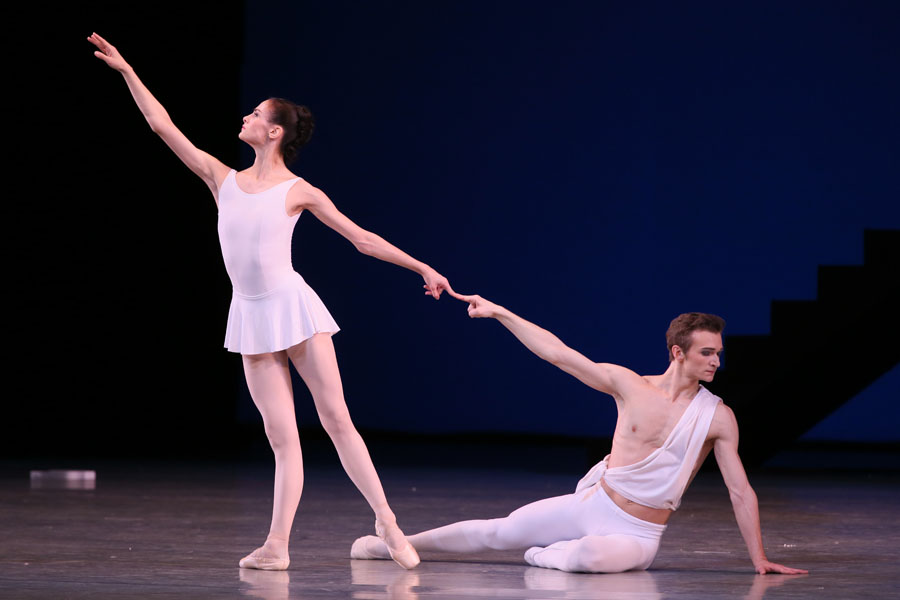
Balanchine’s Apollo
Neoclassical Ballet: The Power of Pure Movement
In another vein, Neoclassical ballet, which was pioneered by choreographers like George Balanchine, strips away ornate storytelling to focus on another thread that connects us all; movement. Works like Apollo present mythological themes in sleek choreography. Let’s consider Apollo as a testament to how different the stories and messages, and the way they are portrayed, can be in ballet. Apollo tells us the story of the young god Apollo as he discovers his artistic gifts with the guidance of three muses: Calliope (the muse of poetry), Polyhymnia (the muse of mime), and Terpsichore (the muse of dance and song). The ballet essentially portrays a supercut of Apollo’s journey of growth and enlightenment as he transitions from the youthful energy of a boy to the maturity of the divine, guided by the inspiration of the arts.
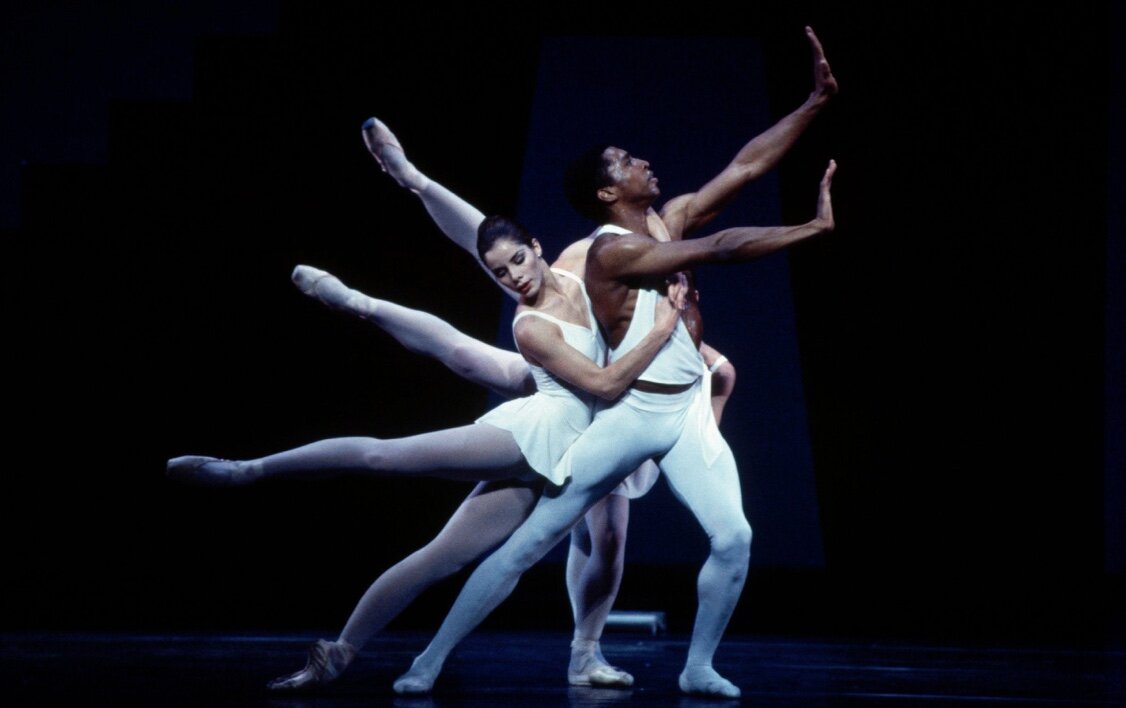
Balanchine’s Apollo
The beauty of Apollo lies in its strikingly minimalistic stage, compared to ballets like Swan Lake or Giselle. There are no costumes, sets, or great symphonic scores. There is abstract choreography, and dancers dressed in simple leotards and tights, to draw emphasis to the purity of movement. Our focus is shifted from viewing a grand spectacle, to seeing the elegance and athleticism of the human body.
Clearly, this offers a very different kind of storytelling – Apollo communicates through symbolism and abstract ideas. The movements of the muses’ represent their respective art forms, and the way they interact with Apollo focus on his evolution as a god and an artist.
There is a stark difference in expression, but the bottom line remains the same – Apollo also explores universal themes in their most basal form – growth, creativity, and the connection between humanity and art. Neoclassical ballet offers a different approach that aims to balance tradition and modernity, and shows the evolution of ballet as a form of storytelling with different perspectives.
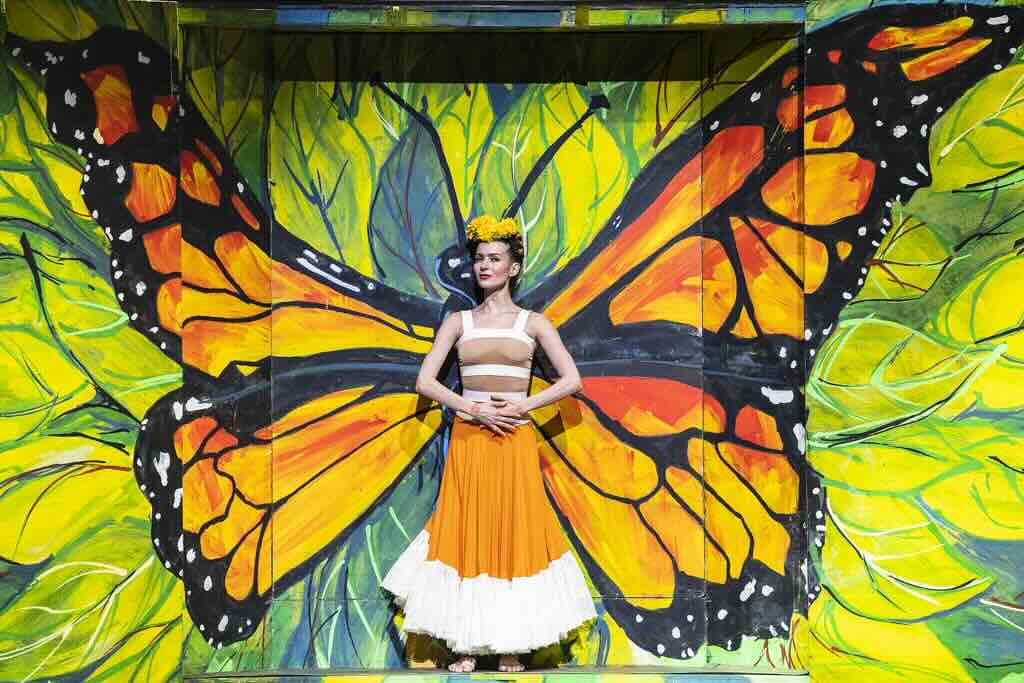
Annabelle Lopez Ochoa’s Broken Wings
Contemporary Ballet: Modern Issues Through Dance
In Contemporary Ballet, the stories often shift to address deeply relevant issues. Take for example Crystal Pite’s Flight Pattern, which explores the global refugee crisis with haunting, fluid movements that evoke hope and desperation. The cast is of just 36 dancers, and the movements are fluid and synchronised to represent the collective grief and desperation of those displaced. The ballet has a stark, monochromatic design and the musical score amplifies the weight of the narrative. Each gesture – reaching hands, collapsing bodies – captures the longing for safety, for belonging and dignity, turning abstract statistics and words about a situation into a personal and haunting experience for the audience.
We can also look at Annabelle Lopez Ochoa’s Broken Wings, which is a one-act, imaginative retelling of the life of the iconic artist Frida Kahlo. The ballet dives deep into the world of Kahlo, exploring her triumphs and struggles in an abstract manner through surreal, vivid choreography that draws a distinct parallel to Kahlo’s bold artistic style. Broken Wings is not just a recounting of Kahlo’s biography, it transforms her journey into an experience, a journey that is symbolic through pain, creativity, and resilience.
With her all-female team of choreographers, Ocha uses striking visuals – costumes and set designs – inspired by Kahlo’s paintings. This blurs the lines between Kahlo’s life and her art, showing how at many instances, they’re both one and the same. The dancers embody Kahlo’s sufferings, her tumultuous relationships, and most importantly, her persevering spirit. The retelling focuses on the connection between the artist’s physical and emotional struggles, offering an empathetic portrayal of Kahlo’s attempts to transform something painful into something beautiful.
Contemporary ballet shines a light on pressing struggles, using movement to provoke empathy and awareness, rather than just general sympathy. We see the timeless importance of storytelling in ballet – whether it’s through the romance of Odette and Siegfried or the raw desperation of refugees seeking hope, these stories, told with the body and without any words, remind us of our shared humanity and the power of movement, music, and dance to connect, challenge, and heal.
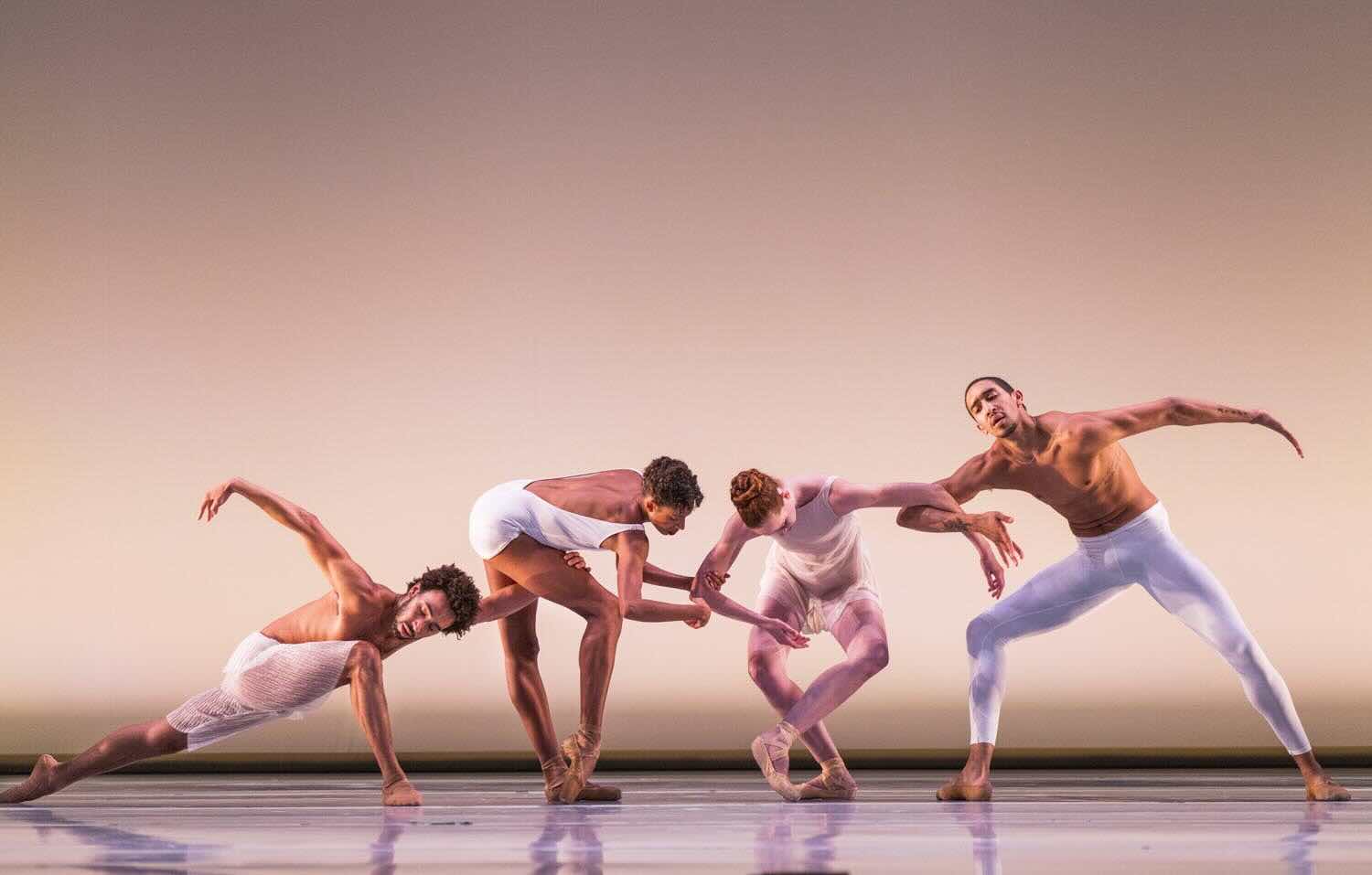
Alonzo King’s LINES Ballet
Fusion Ballet: Breaking Boundaries
Fusion Ballet breaks all boundaries and shows that storytelling in dance and through movement knows no limits. Matthew Bourne’s The Red Shoes, for example, reinvents a classic film and blends ballet with theatrical ballet. Alonzo King’s LINES Ballet integrates African and other classical influences into ballet to explore identity and spirituality. Works like these demonstrate the scalability and adaptability of ballet, underscoring that ballet is capable of embracing and transforming other art forms to tell stories that deeply resonate across time and culture.
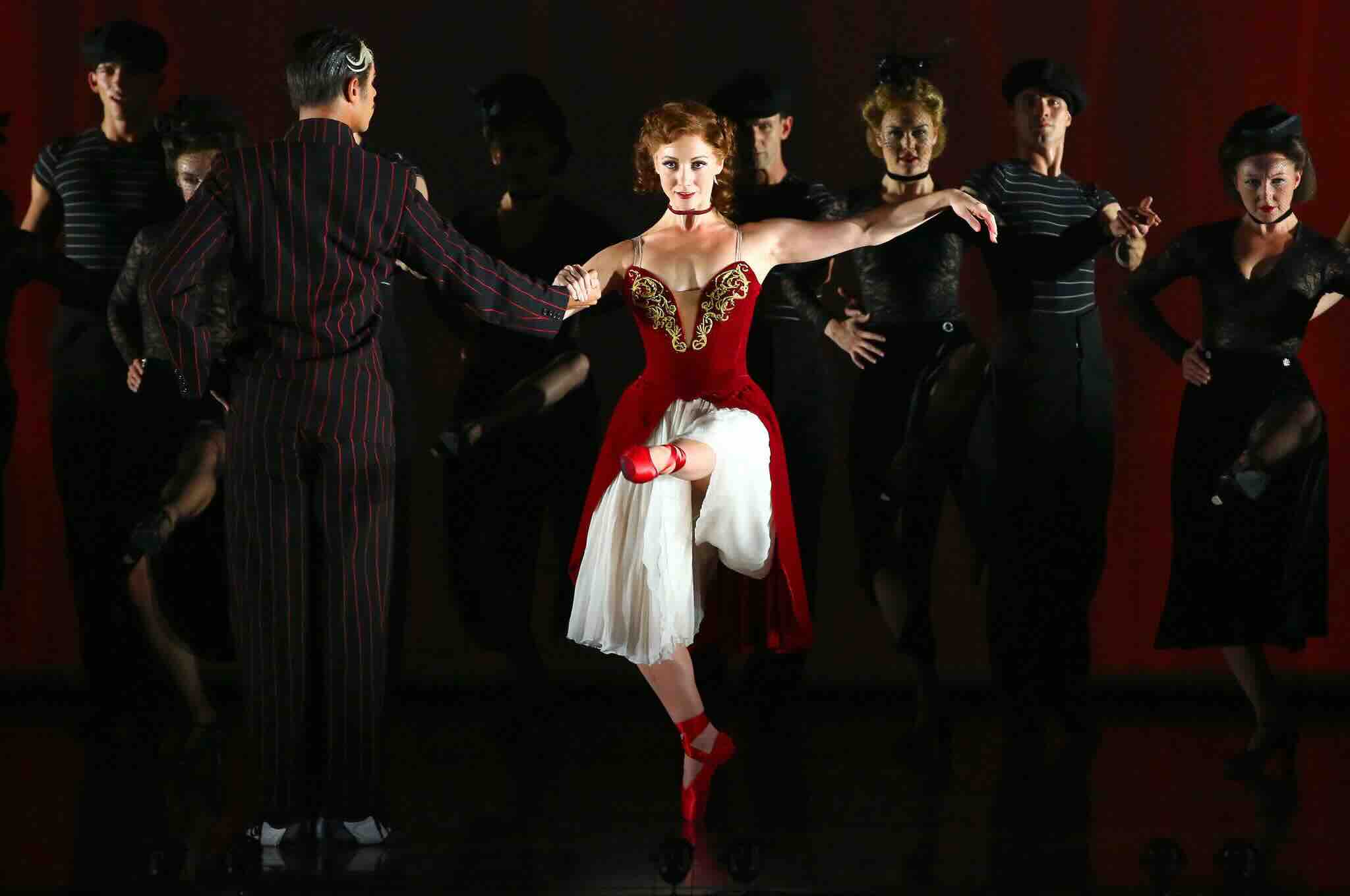
Matthew Bourne’s The Red Shoes
Clearly, ballet is inviting us to witness not just the beauty of movement, but the incredible effort and dedication behind those movements. It is also giving us a raw story on stage, open to interpretation, so much so that the same show is never the same for each audience member. We all relate and resonate with different things, applying different sub texts and contexts to the stories told on stage. We walk away different from the theatre, having seen a story told in a most unique, human manner.
Each style, from classical to fusion, captures a facet of the human experience. Dismissing ballet as repetitive overlooks just how impactful its transformative power is to both honouring tradition and pushing boundaries. In fact, the most beautiful thing about all of this is the fact that it’s all ballet! That is the power of ballet, and movement.

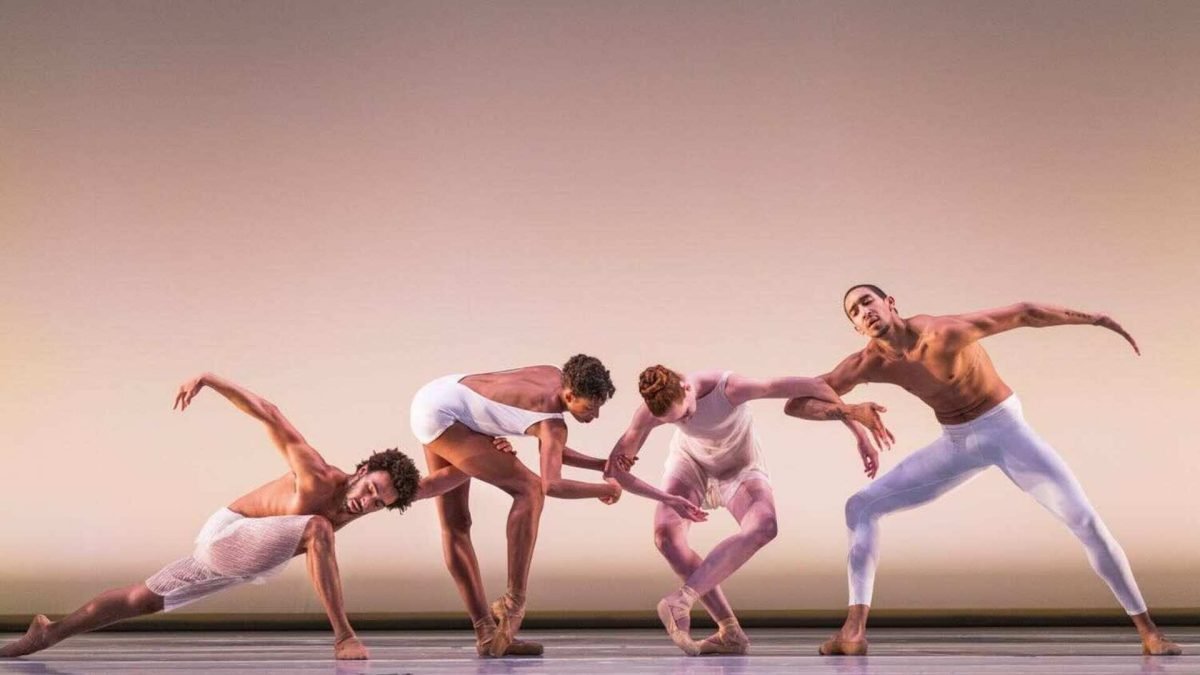
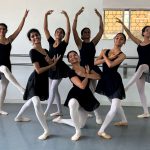

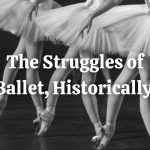

Leave a Reply